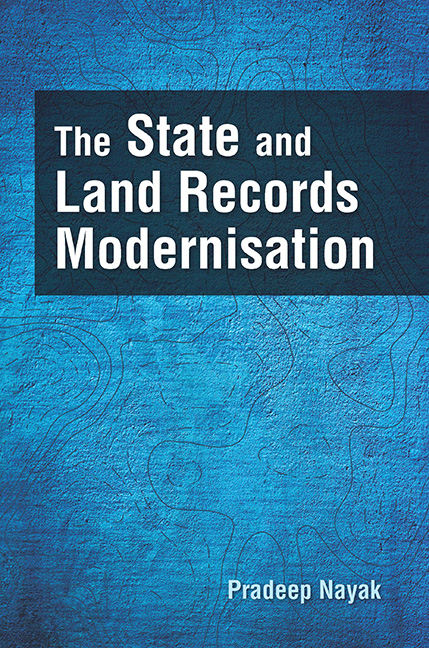Book contents
- Frontmatter
- Dedication
- Contents
- List of Figures and Tables
- Foreword
- Preface
- List of Abbreviations
- 1 The State, ICTs and Governance: A Theoretical Exploration
- 2 E-Governance in Public Policy Discourse in India
- 3 The State and the Policy of Land Records Management
- 4 The Computerisation of Land Records Programme in Odisha
- 5 The Computerisation of Land Records Programme in Karnataka
- 6 The Computerisation of Land Records Programmes in Karnataka and Odisha: A Comparative Study
- Conclusion: Beyond Techno-Managerial Governance
- Select Bibliography
- Index
Foreword
Published online by Cambridge University Press: 02 December 2022
- Frontmatter
- Dedication
- Contents
- List of Figures and Tables
- Foreword
- Preface
- List of Abbreviations
- 1 The State, ICTs and Governance: A Theoretical Exploration
- 2 E-Governance in Public Policy Discourse in India
- 3 The State and the Policy of Land Records Management
- 4 The Computerisation of Land Records Programme in Odisha
- 5 The Computerisation of Land Records Programme in Karnataka
- 6 The Computerisation of Land Records Programmes in Karnataka and Odisha: A Comparative Study
- Conclusion: Beyond Techno-Managerial Governance
- Select Bibliography
- Index
Summary
This book is a pioneering work in an extremely important area that has received little scholarly attention so far, except in the laudatory genre of ‘best practices in e-governance.’ Social scientists are only just beginning to seriously engage with the land question in contemporary India, and this book provides a critical governance perspective on this emerging area of scholarship.
In times past, the modernisation of land records was viewed as crucial for implementation of land reform programmes. It was widely acknowledged that the objectives of land reform, ranging from the abolition of intermediaries to the securing of tenancy rights and the application of land ceilings, could not be accomplished without proper records of land ownership. Despite this acknowledgement, land records remained for the most part a complex tangle of disputes and presumptive ownership. It is only in recent years that the modernisation of land records has once again acquired policy importance, and the inauguration of the National Land Records Modernisation Programme (NLRMP) in 2008 provides the impetus for this comparative study of its implementation in two states: Karnataka and Odisha.
These two states stand at opposite ends of the success–failure continuum. Official data show that Karnataka completed updating the Record of Rights for all its villages in January 2012. However, in Odisha, by contrast, this work is pending in all its villages. In several states, the implementation of the NLRMP has been partially accomplished, while in others – including Madhya Pradesh, Rajasthan, Punjab and Bihar – it appears to have not been attempted at all. This is probably the explanation for the news report, in 2012, that the utilisation of financial allocations for the NLRMP was a mere 14 per cent.
Even as ministerial statements have attributed Maoist insurgency to the insufficient progress made in recovering and securing to adivasi people their lands, Nayak's study shows that the current renewal of interest in the modernisation of land records is aligned to a techno-managerial approach to public sector management in a neo-liberal context. He boldly situates the NLRMP in the context of the hegemony enjoyed by the principles of the New Public Management, as also the World Bank's advocacy of promoting land markets through digitisation.
- Type
- Chapter
- Information
- The State and Land Records Modernisation , pp. vii - viiiPublisher: Foundation BooksPrint publication year: 2015

